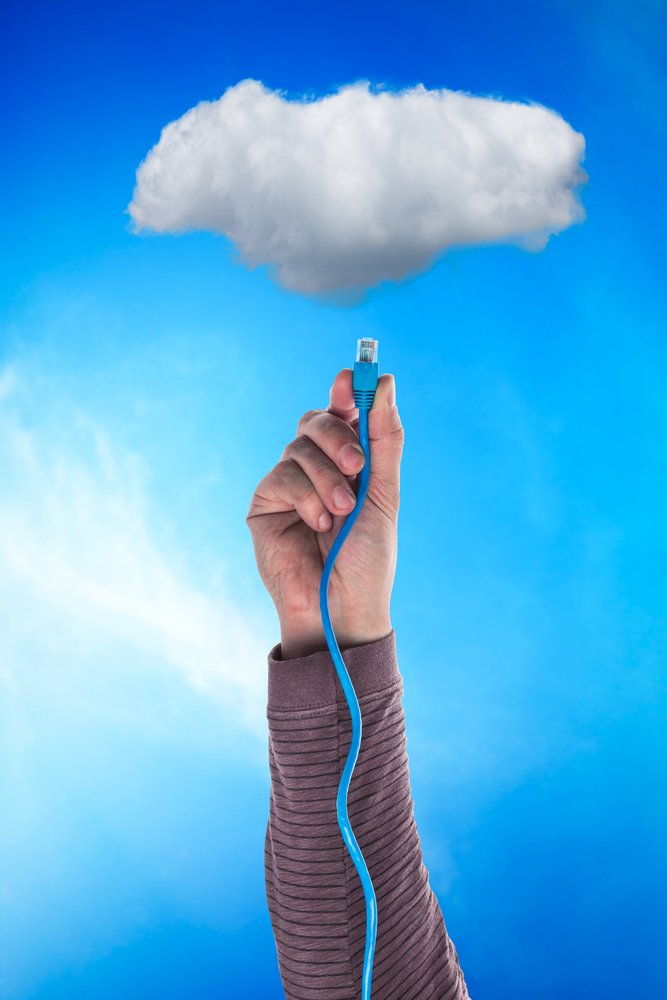
Smaller business' IT budgets prioritize remote work, security and cloud
The IT budgets of small and medium businesses will prioritize three things in the coming year: remote management (58.4 percent), security (55.9 percent), and cloud services (50.1 percent), according to a new report.
The latest State of the SME IT Admin Report from JumpCloud also reveals that 74 percent of the 400+ IT decision makers surveyed say remote work makes it harder for employees to follow good security practices.

How eCommerce has adapted to the pandemic [Q&A]
One of the side effects of the COVID-19 pandemic has been a boost to online shopping. This has increased pressure on companies offering eCommerce to adapt quickly to the new business model.
But how well have businesses -- particularly smaller ones -- coped with this and what should they be focusing on as we move forward?

Why IT needs smarter cloud security
For IT and security professionals, the job of keeping the enterprise secure is becoming an ever more complex proposition. In addition to the fact that distributed working looks set to become a permanent feature, keeping up with a raft of emerging new technologies while dealing with the rising tide of cyber threats means there is a growing number of tasks to keep on top of.
With time and resources in short supply, gaining full visibility of data from across the entire security stack will be key to achieving better and more comprehensive threat detection. But maintaining robust policies and controls also depends on adopting technology that is able to adapt quickly and self-learn from user behaviors.

Open source platform aims to boost cloud-native deployments
Many digital transformation initiatives have been boosted by the pandemic, but they are still too often held back by a shortage of the technical skills needed to deliver them.
Now though open source company WSO2 is launching Choreo, a new integration platform as a service (iPaaS) for cloud native engineering.

Moving to the cloud? A look at enterprise security considerations
Of the technologies that saw a spike due to the pandemic, cloud-based services are experiencing a bump in enterprise sales. The enterprise previously had been trailing scrappy upstarts in terms of digital transformation, largely because of the complications associated with moving tens of thousands of endpoints into a new environment. With entire workforces shifting to work-from-home environments, though, movement to the cloud has become all but inevitable.
According to IDC, digital transformation in the enterprise has accelerated since the start of the pandemic as enterprises seek greater flexibility and cost efficiency. Yet, enterprise security teams are posing a slew of new questions to cloud vendors about the security of their offerings. Best case scenario, this adds time to an already lengthy buying cycle. Worst case, security practices and protocols can kill a contract.

5 simple steps to prevent cloud overspend
There are several drivers that have fueled the surge in cloud usage globally. Businesses are recognizing that the cloud provides a level of flexibility that in-house environments cannot match. Cloud makes it easy to scale up and down quickly and efficiently with nearly unlimited resources. Adding capacity to an enterprise system can often take days in an on-premises data center, if there is capacity, but can be accomplished in minutes in the cloud.
As we have witnessed over this past year, with a sudden need to work from home, cloud rescued many enterprises by providing an abundance of resources quickly. It empowered millions of employees to work from home when circumstances were not conducive to work from their office. Therefore, it's not surprising to see the report from Research and Markets forecasting the global cloud computing market to reach $832.1 billion by 2025. However, with increased cloud usage comes the challenge of managing that consumption and avoiding overspend.

Three-quarters of execs say lack of tech talent is a barrier to cloud use
A new study from consulting firm PwC shows that many businesses are turning to the cloud post-pandemic but that a lack of tech talent is hindering maximising their return on investment.
The study reveals that 50 percent of businesses have gone all-in on the cloud post-pandemic, and an additional 42 percent say they've adopted the cloud in many parts of the business.

Whose responsibility is cloud security anyway?
The question of whether not moving to the cloud is beneficial for security has largely been answered with a resounding "yes," which is why organizations are increasingly relying on cloud-based technology and services for business operation.
A more nuanced conversation, however, lies around the question of whose responsibility cloud security is, ultimately.

Cloud security risks every company can avoid
The benefits of cloud computing make it impossible to ignore in 2021. With more accessibility and state of the art resources at your disposal, the cloud offers the best value in today’s working world in terms of services gained for their cost. That said, security risks can still keep some away from the technology.
Rather than being worried and passing on the tools offered by the cloud, getting educated on what the risks are with cloud computing can help you utilize proven software and programs with peace of mind. When it comes to cloud security risks, a lot of the threats posed to businesses all around the world are avoidable. Here’s a handful of risks you should know about when working in the cloud and how to keep your security tight in this new, exciting space.

Microsoft rebrands Windows Virtual Desktop as Azure Virtual Desktop
With remote working on the rise, cloud services and virtual desktop solutions have become increasingly important. This has been the case for Microsoft’s Windows Virtual Desktop since its public release about a year-and-a-half ago.
Originally targeted at enterprise users, Microsoft now has a broader vision for its cloud VDI platform. As such, Microsoft is adding new capabilities to the services, tweaking pricing, and rebranding it as Azure Virtual Desktop.

Enterprises under-resource cloud security despite increased risks
A new study from Osterman Research, commissioned by Sonrai Security shows that almost a third of US companies are under-resourcing cloud security in the face of rising threats.
Even though half of respondents have spent $10 million or more on cloud services over the last three years, 32 percent say they are doing less than they need to in order to secure their cloud resources.

One Identity introduces modular, integrated, cloud security platform
Security specialist One Identity is launching its Active Roles and Password Manager products in a software-as-a-service format.
Retaining the full capabilities of One Identity's on-premises solutions, the SaaS offerings are hosted, managed and operated within the One Identity Cloud. There's also a new SaaS-delivered solution, Starling CertAccess, which delivers access request and certification Active Directory (AD) and Azure Active Directory (AAD) in the enterprise.

The encryption technology that's revolutionizing secure data usage [Q&A]
Conventional encryption methods rely on the exchange of keys. This can leave them vulnerable, particularly when they're used on public cloud services.
One way around this is to use homomorphic encryption, this permits third party service providers to perform some types of operations on a user's data without needing to decrypt it.

Cloud misconfigurations make 90 percent of companies vulnerable
A large majority of companies that move to multi-cloud environments are not properly configuring their cloud-based services according to a new report from Aqua Security.
Over 12 months, Aqua's research team analysed anonymised cloud infrastructure data from hundreds of organizations. These were divided into SMBs and enterprises based on the volume of cloud resources they scanned.

Five compelling reasons to migrate to Atlassian Cloud
Last October, Atlassian’s CEO Scott Farquhar announced that Atlassian Server was reaching end-of-life (EOL) and customers have two options: either migrate to Atlassian’s own public cloud solution or move to Atlassian Data Center.
To ensure customers have plenty of time to consider these options, Atlassian is taking a phased approach. Since February 2021, organizations are no longer able to buy new Server licenses. However, they can still upgrade or downgrade their Server products until February 2022, and they can renew and receive maintenance and support for their licenses until February 2024. In practical terms this means that most customers with large data migrations will need to migrate to either Atlassian Cloud or Atlassian Data Center by Summer 2023.
